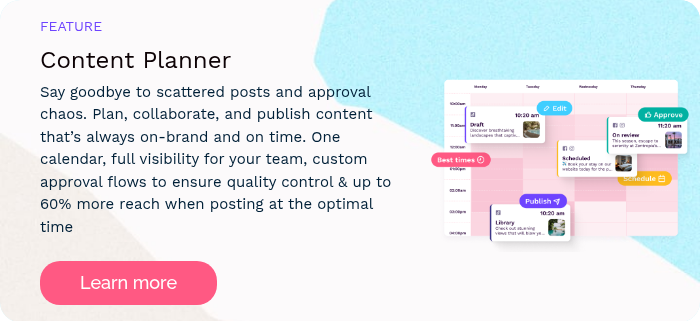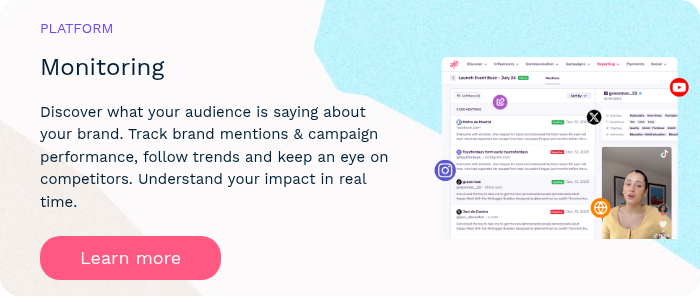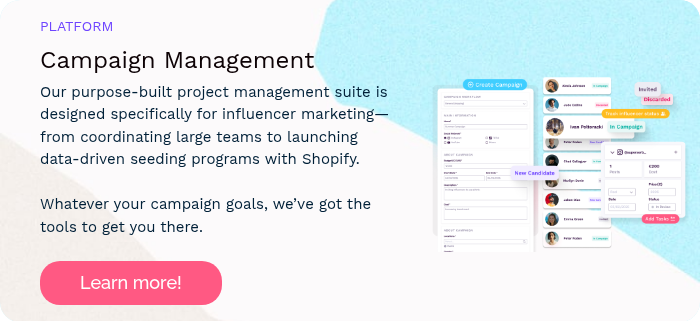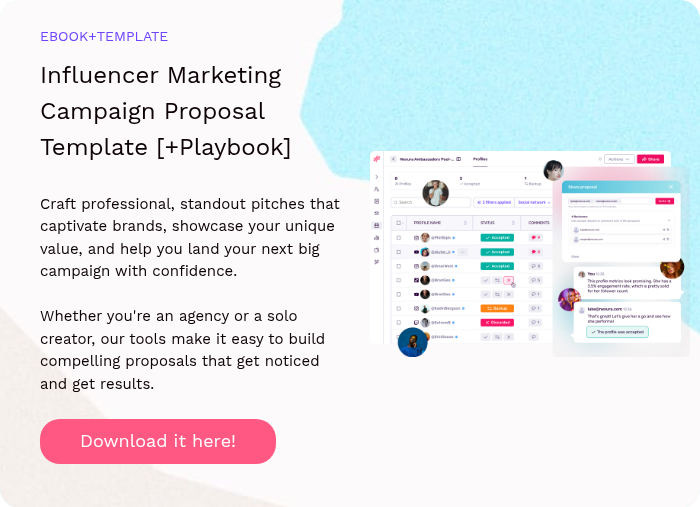51 min read
July 30, 2025
Jul 30, 2025
5 Food Campaigns That Proved a Strong Go-to-Market Plan Is the Secret Ingredient
Written by: Jackie Zote
I remember seeing the Moldy Whopper Campaign from Burger King and having some mixed feelings about it. It was bold, sure. But the unappetizing imagery might be off-putting to a lot of customers. And although it relayed an important message, I wasn’t sure if the message was loud and clear to the brand’s target audience.

Fortunately for Burger King, things worked out in their favor. The campaign saw 2 billion impressions and boosted sales by 4%.
Other brands may not be as lucky, especially if their execution is fragmented and messy. So their food launches may fail even if there’s nothing wrong with the product quality itself. That’s why food businesses need a strong go-to-market plan to ensure a successful launch.
In 2024, these five standout brands crushed their product launches by embedding influencers at the core of their go-to-market (GTM) plan, from early buzz to long-term brand love. This article breaks down how they did it and what you can steal.
Why a Go-To-Market Plan Is More Than a Media Timeline
Many failed food launches we’ve seen in the past flopped not because the food was bad, but because of a poor go-to-market plan.
Often, brands will focus on bringing tons of media publicity for the product during launch. But this comes with limitations, even with some efforts to build anticipation. Their efforts often lack proper targeting and audience education, which results in campaigns that fall flat. As a result, their messaging may be fragmented, and their execution may be all over the place.
That’s why food launches need a go-to-market plan that goes beyond meeting a media timeline. This involves aligning your audience targeting and influencer tiers for better resonance. That way, you can ensure that different tiers of influencers can effectively engage specific types of audiences.

Additionally, there’s a need to develop a content cadence to help you strategically build anticipation before the launch and continue engaging audiences long after the launch. For example, you may want to use teasers, countdowns, and early access at the pre-launch stage. Meanwhile, reviews and giveaways may be an effective way to boost reach and build trust during and after the launch.
Beyond this, creating feedback loops will help you work effectively with influencers. This is essential to pivot and adjust your messaging based on how your audience responds to it.
What a GTM-Ready Influencer Strategy Looks Like
With the above factors considered, let’s take a look at some of the key elements of a GTM-ready influencer strategy.
Segmenting Influencers by Buyer Personas
Not every customer looks up to the same influencer. While some might be inspired by the lifestyle of the vegan mom, others might relate with the Gen Z snacker. This is why it’s crucial to let buyer personas guide your influencer selection.
In other words, work with different types of creators who can help you reach different subsets of your audience. Use your buyer personas to figure out the types of influencers that each group looks up to. This will help you effectively address the needs of each buyer persona and create messaging that resonates.
You can further break it down into an ideal customer profile (ICP), to get more granular with your targeting. Notice how Nature’s Path Organic partners with Sabrina Pare, whose content focuses on sustainability and mindful mothering.
They also partner with influencers like Lauren Giraldo, who shares content about health, fitness, and motherhood. While both creators are technically “mom influencers,” they cater to very different audience types.
Activating Creators at Each Launch Stage
A tactical content cadence is another element of a strong GTM-ready influencer strategy. You’ll want to keep audiences engaged at every stage of the launch to ensure campaign success. This is why you need to plan out your influencer activations and content types for each launch stage.
For example, get influencers involved in creating teasers or providing early access on the days leading up to the launch. You could even invite them to exclusive launch events or send them “surprise” boxes to build hype on launch day. Soon after launch, have them do a taste test to boost awareness and provide an honest review to build trust. It’s also important to build advocacy for continued engagement long after launch.
Using Social Listening to Adapt Messaging
Even when you plan everything right, there’s no guarantee that audiences will respond positively to your campaign. Sometimes, a seemingly innocent message or a tiny blunder could eventually snowball into a huge PR crisis.
A comprehensive go-to-market plan helps you catch your mistakes and negative audience feedback early on and fix them before they turn into something bigger.
Make the most of social listening to monitor audience sentiment and reception toward your campaign. See how they’re responding to creator content – not just in terms of engagements but in terms of sentiments and comments. Influencity’s monitoring tools help you keep track of how people are responding to your food launch, so you can quickly pivot and adapt your messaging.

5 Food Campaigns That Won the Go-to-Market Excellence
Now that you’ve seen the essential elements of a GTM-ready influencer strategy, let’s see how other brands have won the game. Here are five food campaigns that serve as a shining example in go-to-market excellence.
1. Krispy Kreme – “Choco Glaze Craze” TikTok GTM
Platform: TikTok
Influencer Role: Early access
Krispy Kreme originally introduced the chocolate glazed donut in 2017 and occasionally brings it back for a limited time. To build hype for one such release, the brand seeded limited-edition chocolate glazed donuts to foodie TikTokers two weeks before the drop. With these creators sharing reviews and exclusive previews, they helped spark user-generated countdowns and build anticipation for the official launch.
@yasserstahp Original OG going chocolate! You should definitely try it😮💨🍩🤎🤎@Krispy Kreme ♬ original sound - Yasser Ahmed
The brand saw massive success, generating 200M+ views under the hashtag #ChocoGlazeCraze before national release.
2. Starbucks – “Sip Into Spring” UGC Campaign
Platform: Instagram Reels, Pinterest
Influencer Role: Launch partners for spring drink lineup
If there’s one thing Starbucks does really well, (aside from coffee, that is) it’s building advocacy through user-generated content campaigns. So when the brand wanted to launch a new lineup of drinks for spring through the Starbucks Reserve program, UGC came to the rescue.
The brand partnered with whitelisted creators who co-developed aesthetic spring-inspired content to generate awareness about the release. These creators provided inviting descriptions about each drink from the lineup in their unique voice. This helped to boost product knowledge and entice customers to try the drinks. It also compelled customers to share their own “Sip Into Spring” experience, further amplifying reach and engagement.
Owing to the excitement that influencers helped generate for Starbucks’ spring drinks, the brand saw a 14% lift in spring beverage sales compared to 2023.
3. Taco Bell – “Big Cheez-It Collab” GTM Rollout
Platform: Twitter/X, YouTube
Influencer Role: Soft launch testers, YouTube food reviewers
Taco Bell is known for its bold flavors and innovative recipes. So the brand’s 2024 collab with Cheez-It made perfect sense. The two brands collaborated to bring the Big Cheez-It Crunchwrap Supreme to market for a limited time. While the collaboration itself was newsworthy enough (considering they’re both major food brands), Taco Bell went a bit further to generate hype for the launch with the help of influencers.
Weeks before the PR push, they gave out early samples to hype accounts and foodie creators. This generated buzz and built anticipation for the actual launch.
On launch day and the days afterward, the brand built trust through YouTube food reviewers. The glowing reviews from these channels helped reaffirm people’s decision to try the product as they became convinced that the collab was worth a try.
The brand also used influencer commentary to pivot launch ad tone toward humor and nostalgia to better resonate with the target audience. Needless to say, the campaign was a huge success. Taco Bell saw a 97% sell-through rate in 10 test markets, speaking to the success of their go-to-market strategy.
4. Häagen-Dazs – “Cultured Crème” Health Creator Push
Platform: Instagram, YouTube
Influencer Role: Nutritional experts and lifestyle creators
Known for their high-quality ice cream, Häagen-Dazs worked with influencers to promote their new Cultured Crème products. Since the brand wanted to position the products as a healthy snack option, their partnerships focused on nutritional experts and lifestyle creators who pushed the messaging around “gut-friendly indulgence.”
Several YouTube creators generated Shorts and long-form videos explaining the new yogurt-tech innovation in their own voice. This included detailed reviews and taste tests of the products and bite-sized videos with information about the natural flavors and clean ingredients. As a result, the brand could effectively reach their target audience and establish trust with them.

The campaign successfully drove trials in health-conscious Gen X audiences. Häagen-Dazs was able to surpass the initial volume target by 160%.
5. Chipotle – “Unfolded” Sustainability and Transparency Campaign
Platform: TikTok
Influencer Role: Gen Z environmentalists and food critics
Chipotle has been known for their creator-led campaigns, with TikTok playing a huge role in gaining virality. Even for their “Unfolded” campaign, creators played a key role in building awareness and educating audiences.
In a bid to promote sustainability, Chipotle developed an animated short film called “Unfolded,” which premiered on Roblox. The video shone a spotlight on regenerative farming techniques while illustrating the brand’s supply chain transparency. Chipotle also activated influencers who helped to further this messaging and generated awareness about the video.
Gen Z creators on TikTok shared engaging videos about the brand’s limited edition to-go bag promoting the film. They encouraged their viewers to scan the code in the bag to watch the film. This fun and creative approach drove user participation and views.
@emmezhou I STILL CAN'T BELIEVE THIS HAPPENED!!! Had the best @Chipotle lunch with my friends 🥰 Be sure to scan the QR code on the bag to watch Chipotle's video "Unfolded" to learn more! (it's super cute 🥹) #chipotlepartner ♬ original sound - emme zhou
The campaign was well-received among audiences, driving positive sentiment toward the brand. Within just a few months, “Unfolded” generated 14K views even just on the brand’s YouTube channel.
How to Replicate Their GTM Playbook
The above success stories may come from major food brands, but there’s no reason why smaller businesses can’t pull it off. Let’s check out some best practices to help you achieve go-to-market success similar to these brands.
Create a 3-Phase Timeline
Plan out your campaign timeline for three phases. This involves teasing audiences during the pre-launch period, generating buzz and awareness during the drop, and driving continued engagement to retain customers.
That way, you’re not just building up for a campaign that fizzles out in just a few days. Instead, you can get them hyped up for the launch while still sustaining customer engagement and driving purchases even long after the launch.
Layer Content by Creator Type
Different types of creators serve a different purpose. While larger influencers may be great for generating hype, smaller creators are best at driving niche engagement and building trust through relatable content. This is why you need to layer content by creator type so you can effectively engage diverse audience segments.
For example, get macro PR hitters to boost awareness before and during launch. Meanwhile, lifestyle UGC creators can help to sustain continued engagement with product education content. And foodie micro-creators can build trust through honest reviews.
Use Insights to Refine and Pivot
You can never guarantee a flawless campaign. From messaging flaws to audience misalignment, there are plenty of issues that might prevent your campaign from becoming a hit. That’s why it’s important to see how people are responding to your launch and pivot accordingly.

Make the most of audience sentiment insights to identify negative shifts. That way, you can quickly refine your tone and rollout pace mid-campaign instead of risking a PR crisis.
Toolbox Tip: Use Influencity to Build a GTM Creator Roadmap
When it comes to building a GTM-ready influencer strategy, the right tools can make a huge difference in streamlining and optimizing your efforts. Influencity’s comprehensive influencer marketing toolkit enables you to build an effective creator roadmap for your go-to-market strategy.
For starters, you can perform an in-depth influencer audience analysis to see the types of people following an influencer. This goes beyond demographics insights and shows you which topics they’re interested in and which brands they engage with the most. Use these insights to connect each influencer to a specific buyer persona.

Additionally, the influencer relationship management tool lets you create lists and add influencers to them. This makes it easy to sort influencers by type, so you can organize your outreach and briefing efforts. So you can assign campaign roles and create a separate list for each role, such as educator, teaser, loyalist, etc.
Influencity’s powerful influencer analytics tools also make it easy to track how creators are performing at each launch phase. Create dedicated campaigns for each launch phase and use the campaign report functionality to track success as a whole.
You can also look at individual influencer content performance to see what works and how people are responding to it. This gives you the necessary insights to refine your messaging and content cadence accordingly.

Get Set for GTM Success
Now that I’ve shared how other brands are succeeding with their GTM strategies and how you can replicate their efforts, it’s time to put together a plan that works. Make sure to roll out your campaign in phases and strategically plan out your influencer activations and content for each phase.
Other posts you might be interested in
View All Posts
Social Media
32 min read
| September 3, 2025
Fake Engagement vs. Real Influence: How to Spot the Difference in 2025
Read More
Influencer Marketing
50 min read
| September 2, 2025
Affiliate Marketing Tactics That Actually Work for Brands & Influencers
Read More
Influencer Marketing
41 min read
| September 1, 2025






